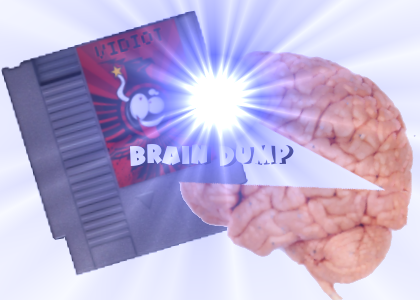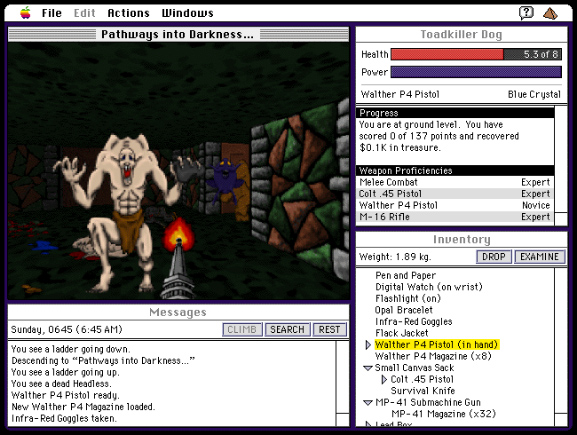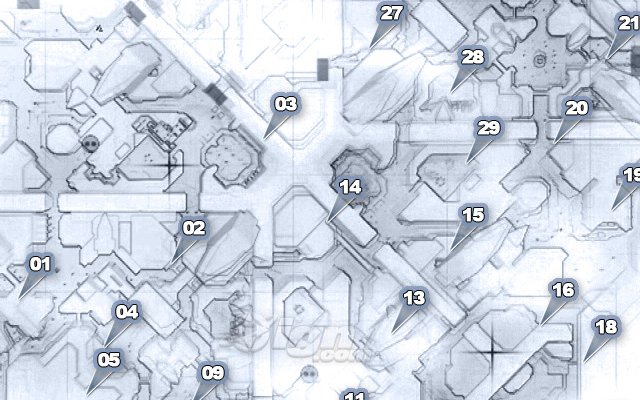Following the design.
By vidiot 10 Comments
I'm knee deep in both Uncharted 2 and Brutal Legend, so of course for today I'm going to write a blog primarily about Halo: ODST.
...
...I'm not exactly sure how that works. It's been too long since I typed a blog so without further ado:

No matter how much things change, the more they stay the same:
Halo 3 ODST is an expansion done right. Was it necessarily worth the price of a full retail product? Or worth a game commercial mascaraing as a movie trailer? Probably not. At the same time, you can't really argue with Microsoft which is very self aware of the fact that sticking the word "Halo" on something will sell a certain amount. So many times I have played something that claimed to be an "expansion", while being nothing more than a map pack. If ODST was released as a downloadable over Xbox Live, I think that a majority of the fan critical detraction's would be not as...over-the-top. Then again, perhaps Halo has become something so commercially polarizing that no matter what is released with the brand is bound to rile up the masses either way.
I'm getting totally sidetracked, back to topic.
My mind began to wander quite a bit while playing ODST. The lone tropper making his way among the steel sky of New Mombasa brought up a feeling of isolation, and more specifically: exploration. This game design brought back memories from a long forgotten past. The purpose of this blog is to isolate the level design philosophy that ODST has, by looking at Bungie's past.
Then we can do things: Like make wild guess about Halo: Reach, that are all probably wrong, but will make a bit of sense.
The beginning of design.
It's 1993. I'm a kid, and I'm looking through a mail in catalog with Mac Software. While browsing a game catches my eye made by a company called Bungie. It was called " Pathways into Darkness", Bungie's first foray into the first person shooter genre.
A few years latter I would finally play Pathways, and get the crap scarred out of me. (Impressionable dumb kid.)
From a design standpoint it was a product of it's time, and it's platform. It was a first person shooter similar to that of Wolfenstien, in-fact in conversation with gamers latter in life Pathways would always be relegated to "The wolfenstien for the Mac".
Wolfenstien 3D, was the Wolfenstien 3D for mac. The game was ported to practically everything.
Instead Pathways had a heavy adventure element associated with it's original design. The player explored by himself a series of long running corridors in a pyramid. He picked up crystals which gave special powers. He even solved puzzles with items.

Yup. Strewn about the corridors were hapless dead people who had not survived their predicament (They were Nazi's so no hard feelings). Utilizing a dialog box, players typed akin to a text adventure style to ask the dead people questions. Throw in multiple endings and semi-non-linear gameplay and you have something pretty neat for it's time.
The adventure elements were strong, and perfect at a time where adventure games were strong.
So what should we take from all this? A high emphasis of story and an experimentation of adventure style exploration.The next few games Bungie would make would take the concept of a story driven adventure in another direction.
The Marathon Era
This is where certain design concepts begin to solidify, more specifically the focus of a "linear, non-linear level" design.
Lost? Don't blame you, I don't exactly know where I am where I type this.
Seriously. Is this my house?
While Pathways focused on adventure mechanics, the next series of games Bungie made re-focused on the action. But The Marathon trilogy still did not lose it's sense that the story was equally important. More specifically, an attention to detail to the locations was emphasized. For an era that was more concerned with giving you a maze to collect card-keys, by contrast The Marathon series made you explore alien cathedrals.
It's at this point where things begin to get interesting. (I know, how many paragraphs are we into.)
Here's a map of the Cathedral level to give you a good visual representation of what I'm trying to get at:

Notice the lack of a specific beginning or end? Your literally dropped in an area, your goal is to get to a communications terminal but before you do there is a series of things you must do before you can. Your looking at the creation of a game design:
The design of a large open level to explore, with various goals to achieve, while picking up various pieces of the game's story via other terminals.
This is concept that is not exclusive to Bungie, but it's a concept that slowly evolved from their games over decades. At the time it was brilliant. The player explored a large open world, finding his objectives in turn. It doesn't work that well for our modern sensibilities.
Without any NAV points to throw up on your map, exploring the levels of Marathon 2 today for the uninitiated can be a frustrating experience. What's interesting is that this solid design was almost thrown away, and the open-world esque design ran into a speed bump of sorts.
That speed bump was Halo.
From Halo to ODST
The original Halo was conflicted with this design, and no greater example are two levels in the game: The Silent Cartographer and The Library. The Silent Cartographer was that fun level where your dropped off the back of a pelican and recreate the Omaha beach landing....BUT in the future.

More importantly it exhibited the level design mentality of Marathon, giving you a large open level to explore and objectives to complete.
By contrast, The Library is a complete change from this philosophy, sticking primarily to a linear design propelling the player continually forward. We see more of this throughout the Halo series, with varying degrees of linearity and semi-experimentation between the two designs.
Which brings us to today:

Side terminals not associated with the campaign akin to Marathon, are scattered about. The main advancements of story are initiated in the form of more traditional linear levels, while the player explores a location alone.
And the memories of Pathways Into Darkness came back to me. Reminding me that even though it's 2009, certain designs always hold true, no matter how much they've changed.
The future!

Notice: The following obviously is totally my speculation.
We know that Halo: Reach will be a prequel, and it will take place primarily on the doomed planet Reach.
I predict a similar style to ODST will be put into play, instead of multiple ODST troppers to play as you will play as Spartans.
More importantly, giving the track record of the games, I think Reach's HUB world will dwarf ODST's, with players roaming the main battle on Reach and initiating linear levels taking place elsewhere on the planet.
While we are mostly aware that portions of core gameplay mechanics both changes and mutate over the years, games design also has a similar flux. We take a lot of this for granted, and it's fun to write stuff we usually gloss over.
